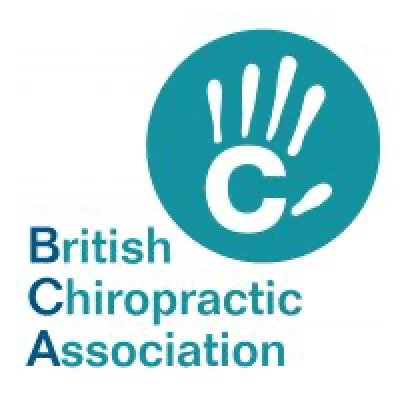Osteoarthritis: What actually is it and do I have it?
What is Arthritis?
The term arthritis means joint inflammation. The most common and well known type is osteoarthritis, this is a degenerative type of arthritis. There are hundreds of types of arthritis and many related conditions, including rheumatoid arthritis which is an inflammatory arthritis, infectious arthritis and metabolic arthritis such as gout.
Arthritis gets referred to a lot. Generally, it is used as a diagnosis for complaints that are not sinister, but we still get scared when someone tells us ‘It’s probably a bit of arthritis’. This is probably because it is being described as nothing serious and is perfectly normal osteoarthritis. Another common phrase used when we discuss arthritis is that the joint is ‘wearing away’. This isn’t true, but we will come on to that later.
A good way to think about Osteoarthritis is how we think about the visible effects of ageing.
We can make the assumption of someone’s age based on their visible features such as grey hair or no hair and wrinkles. You can clearly see the differences between a 20 year old and a 70 year old. The degree of ageing much like our joints is different for every person. There are a lucky few 70-year-olds who still have a good hairline and not so many wrinkles. This is how we should think about our joints. As we get older our joints start to deteriorate, they don’t look as perfect or as good as they did 50 years ago.
Again, like our appearance, some are more bothered or more irritated by the wrinkles and grey hair. The same thing happens with osteoarthritis, some joints may look bad on X-rays or scans but that doesn’t necessarily relate to how much the individual is being irritated by the joint or by how much pain they are in.
Some individuals can have small amounts of change within the joint and be in vast amounts of pain whereas someone who has excessive changes within the joint may not be in any pain.
This is why explaining arthritis it is not clinically appropriate to base the pain on the amount that the joint has ‘worn away’.
Why does this happen?
At some point everyone is likely to experience the effects of Osteoarthritis. Some may unfortunately feel the effects of it in their 40s, others may not feel the effects until their late 70s and some may not develop any pain at all. It is a disease that is specific to the individual.
What is normal is people getting it. What isn’t normal is people experiencing pain.
When you have osteoarthritis there are certain risk factors that alter the speed at which these age related changes affect you. Smoking, drinking or having a poor diet can increase the speed at which these changes can develop and cause pain. Anything that increases your resting level of inflammation makes your more likely to get symptoms.
On the other hand, you can decrease the rate of change by doing the opposite. For example eating well and exercising regularly. What we cannot influence is our genetics. Unfortunately there is a genetic/ hereditary link with arthritis. Your genetics may be on the faster or slower side of these changes happening. Genetic components can also affect the symptoms you feel, not just the rate at which changes are made.
What are arthritic changes?
Arthritis can cause visible changes such as swollen or knobbly finger joints. These arthritic changes are seen far better through further imaging, such as X-Ray.
The initial changes you see on an X-Ray are within the cartilage. The cartilage is a smooth tough tissue that covers the joints and acts as a shock absorber. It allows joints to slide over one another when we move. The cartilage starts to roughen and thin out, making it harder for the joint to slide and the tendons and ligaments then have to work harder. This can cause swelling around the joint.
As osteoarthritis progresses and the joint starts to degrade bony spurs can start to form. When there is a severe loss of cartilage the bone can begin to rub which can alter the shape and normal position of the joint.
Here you can see the comparison between a normal healthy spine and a degenerated spine.
What are the symptoms of osteoarthritis?
- Redness
- Swelling
- Loss or reduced movement
- Stiffness
- Pain
Common areas affected: knees, hips and spine (weight bearing joints) and thumbs and fingers.
Our thumbs and fingers are not weight bearing joints but are areas where arthritic changes are be most visible to the naked eye. This is where the risk factors come in. Smoking, overweight with central obesity/abdominal fat, diet, genetics, injury or surgery.
Risk factors accelerate the age related changes that occur within the joints. Going back to our grey hair and wrinkles analogy those that have been exposed to lots of sun or have been weathered in the wind. Their skin would be more affected later in life compared to those that have worn sun cream or stayed indoors. Symptomatic osteoarthritis is more related to exposure to risk factors rather than overuse. Unless you are an elite athlete where developing arthritis from overuse is possible.
How to help osteoarthritis?
You cannot reverse the effects of arthritic changes but there are things you can do to help manage the pain that may be associated with it and alter the speed at which arthritic changes occur. Unfortunately managing the pain is related to the severity of pain being experienced. We can classify arthritis as mild, moderate or severe. The aim of treatment is pain reduction.
Short term
- Heat/ice
- Anti-inflammatories
- Joint supports for when moving
Long term
- Weight loss – This reduces the impact on the joint and the force placed upon it. Reducing your abdominal fat also reduces the release of inflammatory up regulators which increase the amount of inflammation within the body.
- Diet – Anti-inflammatory diet. This is a very big topic to cover, but simply increasing the consumption of fresh fruit and veg, eating lots of nuts and seeds, including turmeric and ginger are great ingredients to use in your cooking. Also avoiding or decreasing the consumption of processed foods or foods with added or refined sugars.
- Exercise – Has a short-term anti-inflammatory effect but also helps with long term stabilisation and tolerance of the joint.
- Stop smoking
- Reduce alcohol intake
- Managing depression and anxiety
- Reduce stress
If you have any further questions on Osteoarthritis please send Kelly an email.
Read on to our next article Soft Tissue Injuries by Physiotherapist Ange.


























